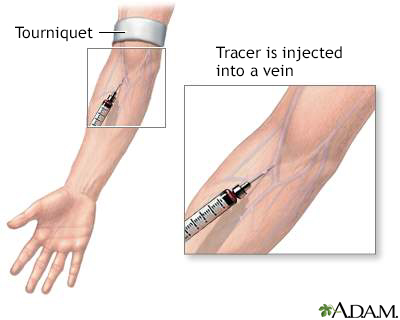Gallbladder radionuclide scan

Gallbladder radionuclide scan
The gallbladder radionuclide scan is performed by injecting a tracer (radioactive chemical) into the bloodstream. A gamma camera is used to perform the scan. The camera will detect the gamma rays being emitted from the tracer, and the image of where the tracer is found in the organs is transmitted to a computer. This test is very good for detecting acute infection (cholecystitis) or blockage of a bile duct. It is also helpful in determining whether there is rejection of a transplanted liver.
Reviewed By
Jason Levy, MD, FSIR, Northside Radiology Associates, Atlanta, GA. Also reviewed by David C. Dugdale, MD, Medical Director, Brenda Conaway, Editorial Director, and the A.D.A.M. Editorial team.
 All rights reserved.
All rights reserved.